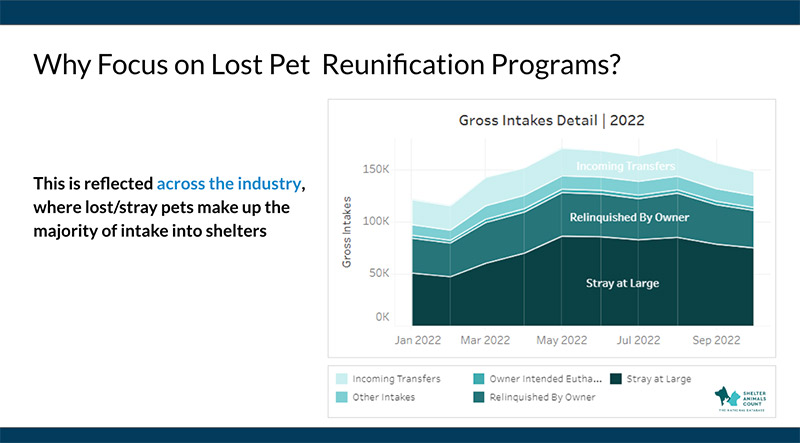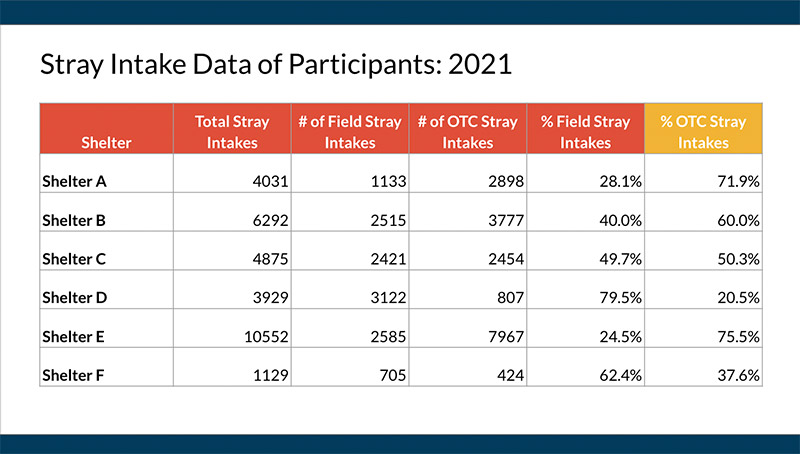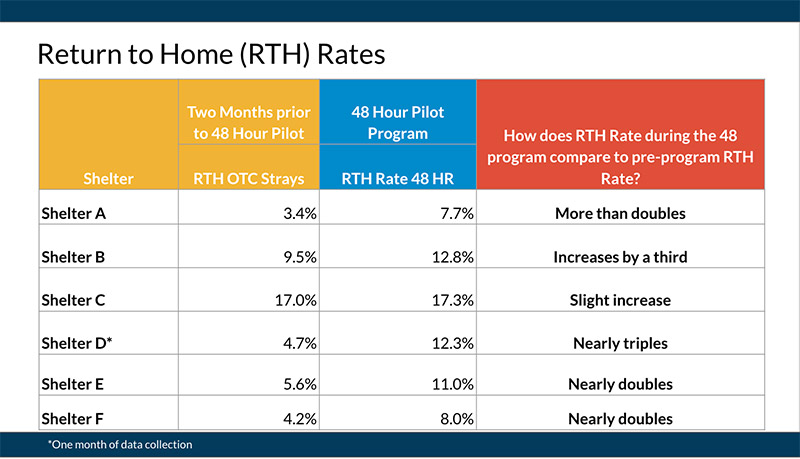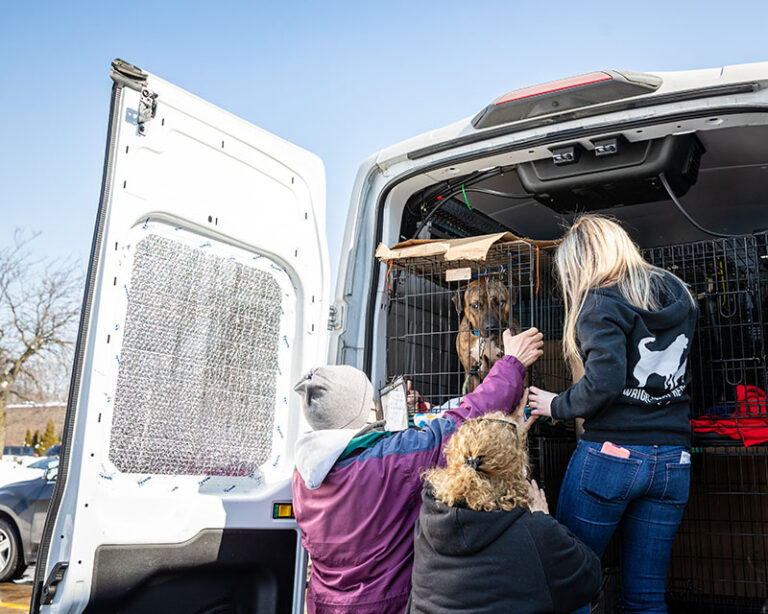About half the pets who enter animal shelters come in as “strays,” but many aren’t stray at all—they are owned pets who’ve gotten away from home. Developing, refining, and teaching, data-backed, effective ways to reunite lost pets with their owners is one of the Human Animal Support Services’s top priorities, because it’s a key way to keep people and pets together, and prevent shelter overcrowding.

To that end, in 2022 we launched a pilot program to test what we call the 48 Hour Program. As an alternative to bringing lost pets directly to the shelter right away, finders of friendly, healthy lost pets were asked to hold onto them for 48 hours, with the shelter providing support such as tips for how to locate the pet’s owner, providing supplies and food, posting about the found pet on their website and social media pages, and creating dedicated lost and found social media pages where lost pet finders could connect with people searching for their lost pets.
Anyone who couldn’t or didn’t want to temporarily keep the pet, could bring them to the shelter.
This pilot program is modeled on one implemented by Cabot Animal Support Services, as part of their overall approach to engaging their community to help found dogs.
The participating shelters are all government shelters, or shelters with government contracts. Six shelters participated, for 1-2 months each. Some participating shelters took in as few as just above 1,100 stray animals per year, while others took in over 10,000. The shelters were geographically varied, and also varied in terms of implementation.
Some of the shelters had robust existing lost and found programs already in place when the pilot program began; others did not and the 48 Hour Program was the start of their formalized efforts to reunite lost pets with their owners.

In other words, this pilot project was tried in a lot of different conditions—and at the end, one thing was clear: all programs saw success.
At every single shelter, the rate at which pets were reunited with their owners increased, sometimes by a significant amount, over what was happening before the 48 Hour Program was implemented.
Another unexpected positive outcome: in cases where the pet couldn’t be reunited with their owner, the lost pet finders in many cases adopted the pets, or were able to find homes for them. This is a win for the shelters, and for the lost pets.

What are some other observations and lessons from the 48 Hour Program pilot? We have a whole lot of them!
- Marketing makes a big difference. When participating shelters told their community about what the program is, and how people can help, it played a big factor in rates of success. This can include FAQs on the website and dedicated Lost and Found web pages, billboards, bus shelter signs in neighborhoods with high intake numbers, radio PSAs, social media posts and campaigns, media pitches and news releases.
A related finding is that the only pilot shelter not to create an external communications plan had the lowest success rate, and the lowest participation rate (meaning fewer finders of lost pets agreed to hold on to them for 48 hours).
- Posting lost and found pet reports to a shelter website and social media pages is another important factor in getting more lost pets home. Putting these posts up quickly was correlated with program success for our small sample. This could mean that faster leads to more pets being returned home!
- Consistently following up with lost pet finders made another significant difference. Here’s info on using a texting platform to make this process more efficient.
- Shelters with existing foster finder programs—that is, programs where people who find lost pets can foster them through the shelter—could still increase the number of pets returned to their owners by building 48 Hour activities into their existing programs.
Connected with this point, shelters with existing foster finder programs had higher rates of pets being reunited with their families than those that don’t. This suggests that communities and shelters becoming experienced with lost pet reunification programs, helps make those programs become more successful.
In other words, don’t give up if a new lost and found program doesn’t lead to instant results. Give your shelter, and your community, some time to make it work.
- Data is key. Tracking the data on lost pet outcomes matters for understanding what works with new programs like the 48 Hour Program. Tracking data also helps other shelters, by providing lessons for when they are creating and running programs of their own.
- The community wants to help. Many people (1 in 3, according to our findings) are willing to hold onto lost pets for short periods, to help them get back home—or to find them new homes.
- You don’t necessarily need a large dedicated staff to successfully run a 48 Hour Program. One of the most successful shelters had just one staff member involved, while one of the lower performing shelters had the most staff members. Stay tuned for more information about the optimal staffing level for a 48 Hour Program—this is an area where we are doing further research.
- Showing gratitude toward finders, helps this process. Let them know you appreciate their efforts to hold onto a lost pet, and help that pet get home.
Stay tuned! More is coming on the 48 Hour Program—in the meantime, check out all these lost and found resources that’ll help you get more pets back home where they belong:
- 48 Hour Lost Pet Program: Text/SMS Platform Recommendations
- This Lost Pet Reunification communications kit, created by HASS and HeARTs Speak
- These Animal Service Officers Carry Bags of Fence-Fixing Gear, All Donated, in Their Trucks
- Giving Lost Pets a ‘Free Ride Home’ Helps People, Pets, and Shelters
- 5 Kits, Infographics, and Tools to Get More Lost Pets Back Home to Their Families
- This Shelter Started a Lost and Found Texting Program and Got Twice as Many Dogs Home
- 6 Cheap—and Even Free!—Ways to Get More Lost Pets Back Home Today
Do you have an idea for a blog? Reach out at marketing@americanpetsalive.org!






